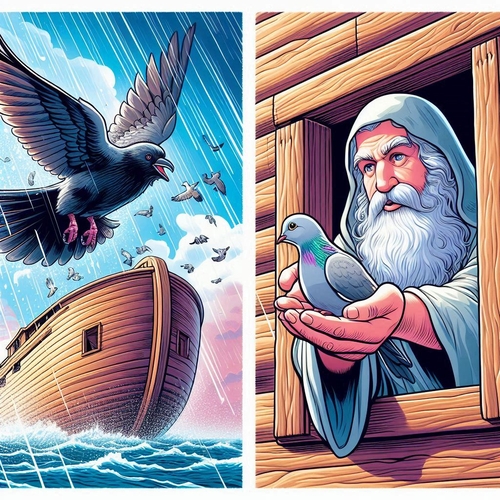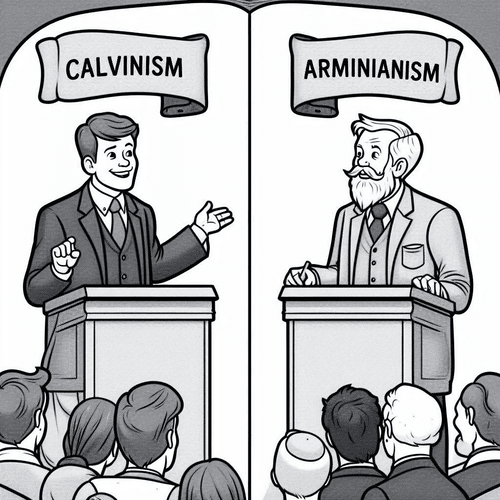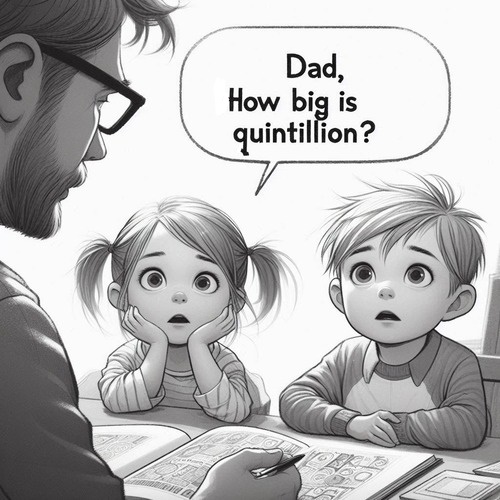After the Flood: Did Noah Release a Raven Or A Dove?
Critics of Scripture love to point out what they consider obvious contradictions in the Bible. One of their favourites? The account of Noah releasing birds after the flood. “Did he send out a raven or a dove?” they ask with a knowing smirk. “The Bible can’t even keep its story straight!”
But what if the supposed contradiction reveals something far more sophisticated than primitive confusion? What if a careful reading of Genesis 8 shows not Bible error, but biblical wisdom?
WHAT GENESIS ACTUALLY SAYS
Let’s examine the text that supposedly contradicts itself. Genesis 8:6-12 tells us: First, Noah “sent out a raven, and it went to and fro until the waters were dried up from the earth” (v. 7). Then he “sent out a dove to see if the waters had subsided from the face of the ground” (v. 8). The dove returned because it “found no place to set her foot.” Seven days later, Noah sent the dove again, and it returned with a fresh olive leaf. After another seven days, he sent the dove a third time, and “it did not return to him anymore” (v. 12).
Notice what the text actually describes: sequential actions, not simultaneous ones. Noah didn’t send out “a bird”—he strategically deployed two different birds for two different purposes.
THE REFORMED APPROACH TO SCRIPTURE
In the Reformed tradition, we let Scripture interpret Scripture. When we encounter apparent contradictions, we don’t immediately cry “error” or invent elaborate theories about conflicting sources. Instead, we dig deeper, trusting the God who inspired Scripture is not the author of confusion.
The grammatical-historical method—reading the text in its original context—reveals the wisdom behind Noah’s strategy. This wasn’t primitive storytelling; it was sophisticated survival tactics.
TWO BIRDS, TWO PURPOSES
Why would Noah send out both a raven and a dove? Because they served entirely different functions.
The Raven’s Mission: Ravens are scavengers. They can survive on carrion—dead animals floating on the water’s surface. When Noah sent out the raven, it “went to and fro” continuously, never needing to return to the ark for food or rest. The raven became Noah’s persistent scout, constantly surveying the landscape from above.
The Dove’s Mission: Doves, by contrast, need dry land and fresh vegetation. They can’t survive indefinitely on floating debris. Noah’s three dove missions were specific reconnaissance flights designed to answer precise questions: Is there dry land? Is vegetation returning? Is it safe to leave the ark permanently?
This wasn’t confusion—it was complementary intelligence gathering.
Consider Noah’s two-pronged approach. The raven provided continuous surveillance while the dove offered targeted updates. The first dove mission confirmed dry land was still unavailable. The second mission—with the olive leaf—proved plant life was returning. The third mission, when the dove didn’t return, signalled that conditions were finally suitable for permanent settlement.
Noah wasn’t randomly throwing birds out of the ark hoping for the best. He was implementing a carefully planned reconnaissance strategy using the unique capabilities of different bird species.
ANSWERING THE CRITICS
- “If it’s one coherent account, why mention both birds?” Because they played different roles in Noah’s survival strategy. Mentioning only one would give us an incomplete picture of his wisdom.
- “Doesn’t the Documentary Hypothesis explain these ‘contradictory sources’?” The Documentary Hypothesis assumes apparent contradictions must reflect different authors or traditions shaped the Torah. But when we read carefully, we discover complementary accounts that demonstrate unified, sophisticated thinking—exactly what we’d expect from inspired Scripture. (CHECK OUT OUR POST: The Documentary Hypothesis: Who Really Wrote the Torah?)
- “Don’t other ancient flood stories contain similar contradictions?” Actually, the biblical account shows superior logic compared to other ancient Near Eastern flood narratives. Where other accounts seem confused or contradictory, Genesis demonstrates remarkable coherence and practical wisdom.
ANCIENT WISDOM, NOT PRIMITIVE CONFUSION
Archaeological evidence confirms ancient peoples used birds for navigation and land-scouting. Noah’s strategy reflects deep understanding of animal behaviour and survival tactics—the kind of wisdom we’d expect from someone receiving divine guidance.
The Mesopotamian flood accounts in Gilgamesh and Atrahasis also mention birds, but they lack the systematic approach we see in Genesis. The biblical account stands out for its logical progression and practical sophistication.
LESSONS FOR TODAY
For believers, this passage builds confidence in Scripture’s reliability. What appears contradictory at first glance reveals deeper truth upon careful examination. This principle applies to other “problem passages” that skeptics raise.
This passage demonstrates why careful reading matters. The difference between “contradiction” and “complementary account” often lies in our willingness to engage with the text closely rather than accepting surface-level criticisms.
A RAVEN OR A DOVE? NO CONTRADICTION, JUST COMPLEMENTARY WISDOM
The question “Did Noah release a raven or a dove?” is like asking “Did the general use infantry or artillery?” The answer is both—each served its strategic purpose in the larger campaign.
Noah’s post-flood reconnaissance wasn’t the confused product of conflicting traditions. It was the inspired record of a man using God-given wisdom to navigate unprecedented circumstances. The raven provided continuous surveillance while the dove offered targeted intelligence. Together, they gave Noah the information he needed to make life-or-death decisions for his family and the future of humanity.
Rather than revealing Bible contradiction, Genesis 8 showcases biblical sophistication. It demonstrates that the same God who preserved Noah’s family through the flood also equipped Noah with the wisdom to know when their ordeal was finally over.
A RAVEN OR A DOVE? RELATED FAQs
What do major Reformed commentators say about this passage? John Calvin argued Noah’s use of both birds demonstrates “prudent diligence” rather than uncertainty, showing how faith and practical wisdom work together. Matthew Henry emphasized that the different birds served God’s providence in providing Noah with comprehensive information about conditions outside the ark. Modern Reformed scholars like Derek Kidner and Gordon Wenham highlight the narrative’s sophisticated structure, noting that the text deliberately contrasts the birds’ different behaviours to show Noah’s methodical approach to leaving the ark.
- How does this passage relate to the covenant theology central to Reformed thought? Reformed theologians see Noah’s careful reconnaissance as part of God’s covenant faithfulness—the Lord didn’t just preserve Noah’s family but equipped them with wisdom for the transition back to dry land. The progressive revelation through the birds mirrors how God reveals His covenant promises gradually throughout Scripture. Some Reformed scholars also note that Noah’s role as covenant head required him to act responsibly for his household, making his careful strategy a model of godly leadership rather than fearful hesitation.
- Did ancient Jewish interpreters see any contradiction in this text? Early Jewish sources like Jubilees and the Talmud show no awareness of any contradiction, instead focusing on the practical wisdom of Noah’s actions. Rabbinic literature actually expands on the different roles of the birds, with some traditions suggesting the raven was sent first because it was “unclean” and therefore expendable, while the dove was clean and precious. These interpretations demonstrate that readers close to the original cultural context saw complementary rather than contradictory accounts.
- How do we know the sequence of events if Moses wasn’t there to witness them? Moses wrote Genesis under divine inspiration, receiving revelation about pre-Abrahamic events through the Holy Spirit rather than eyewitness testimony or oral tradition alone. The detailed, coherent narrative structure suggests divinely revealed history rather than compiled folklore. Many Reformed scholars also note that the account’s practical sophistication—like understanding different bird behaviours—reflects supernatural insight into the events rather than later legendary embellishment.
How does the Westminster Confession’s view of Scripture apply to this passage? The Westminster Confession affirms that Scripture is “given by inspiration of God, to be the rule of faith and life” and contains nothing contrary to itself when properly interpreted. This passage exemplifies the Confession’s principle that “the infallible rule of interpretation of Scripture is the Scripture itself”—careful reading resolves apparent difficulties. The Confession’s emphasis on Scripture’s clarity (perspicuity) suggests that this passage’s meaning should be accessible to ordinary believers, not requiring complex source theories to make sense.
A RAVEN OR A DOVE? OUR RELATED POSTS
Editor's Pick
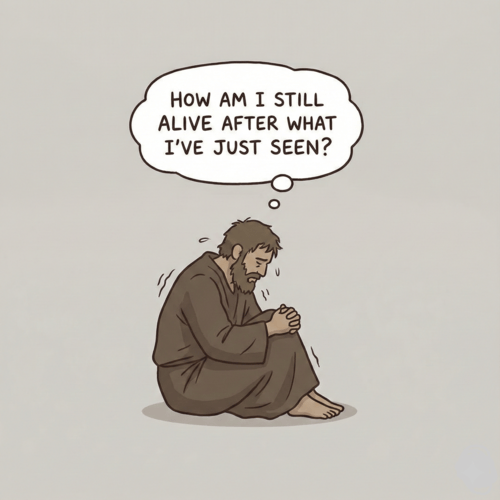
The Throne-Room Vision: Who Did Isaiah See?
The scene is unforgettable: Isaiah stands in the temple, and suddenly the veil between heaven and earth tears open. He [...]
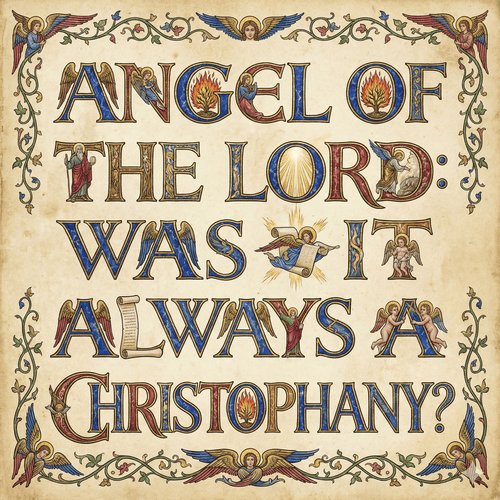
The Angel of the Lord: Can We Be Certain It Was Christ All Along?
Throughout the Old Testament, a mysterious figure appears: the Angel of the LORD. He speaks as God, bears God’s name, [...]
SUPPORT US:
Feel the Holy Spirit's gentle nudge to partner with us?
Donate Online:
Account Name: TRUTHS TO DIE FOR FOUNDATION
Account Number: 10243565459
Bank IFSC: IDFB0043391
Bank Name: IDFC FIRST BANK


